
All categories
Featured selections
Trade Assurance
Buyer Central
Help Center
Get the app
Become a supplier

(1922 products available)
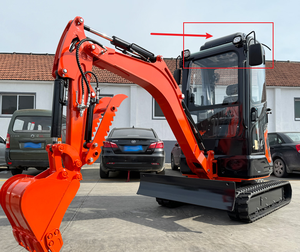
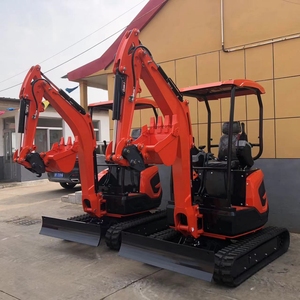
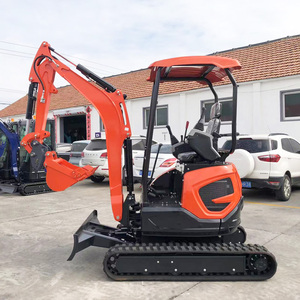
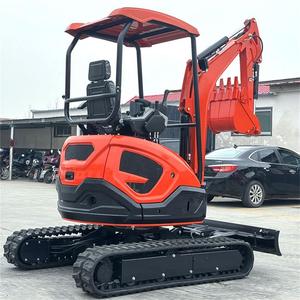
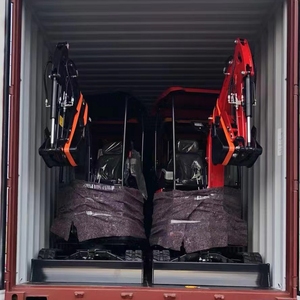
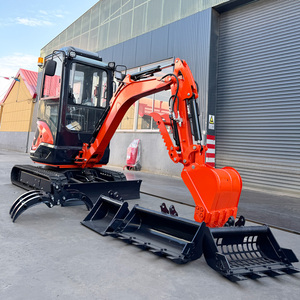



































A spider digger is a type of excavator with spider-like legs that enables the machinery to stand on uneven surfaces or climb slopes. It is an all-terrain digger that is widely used in landscaping, agriculture, and construction. Below is a detailed explanation of the different types of spider excavator diggers.
Tracked Spider Diggers
A tracked spider digger has a special mechanism that allows it to have separate tracks resembling a spider's legs. Each track operates independently, providing the machine with stability while traversing uneven terrain. The tracked leg design allows it to straddle wide gaps smoothly. This type of all-terrain digger is widely used in construction and demolition.
Wheeled Spider Diggers
A wheeled spider digger has a leg configuration with an assembly resembling a spider that is mounted on wheels. This design provides mobility and speed in different digging applications. This type is mostly used in agriculture for digging trenches.
Mini Spider Diggers
Mini spider diggers are designed for lighter tasks such as moving soil, digging trenches, or landscaping. They come with remote-controlled operations. This type of spider digger excavator is commonly used in small construction projects and urban landscapes where space is limited.
Heavy-duty Spider Diggers
Heavy-duty spider diggers are designed to handle large excavating tasks. It features strong engines, larger bucket capacities, and advanced digging depth functions. The machine is suitable for mining operations and large-scale infrastructure projects.
Specifications may vary depending on the type of spider excavator and its intended application. The following are critical excavator specifications and their maintenance requirements:
The versatility of a spider excavator makes it suitable for various industries and applications.
Construction:
A spider excavator is widely used in the construction industry. Excavators are commonly used in site clearance, trenching, digging footings, laying foundations, and drainage. Spider excavators with crawlers are ideal for working on uneven ground as they stay stable in hilly terrain.
Landscaping:
Landscapers can use the excavator spider to make gardens look great, create paths, and prepare garden areas. Doing this is easy because the excavator can go over rough land without trouble.
Agriculture:
In the agricultural sector, a mini spider excavator with a grapple attachment can perform multiple tasks, including tree removal, pipe trenching, and fence installation. Farmers use these excavators to dig drainage ditches and work on irrigation systems, too.
Mining:
Spider excavators play a significant role in the mining industry. They are widely used in open-pit mining and extraction operations. Excavators help clear overburden, extract minerals, and create access roads. They are also used for land grading and leveling within mining sites.
Demolition:
Demolition projects sometimes require working in challenging access areas. The stability and maneuverability of a spider digger allow operators to safely navigate and access demolition sites. Spider excavators can dismantle structures and level the ground.
Forestry:
Forestry operations involve tasks like tree planting, stump removal, and clearing land. Spider mini diggers are suitable for forestry tasks. They are commonly used for clearing bushes, removing trees, and creating access roads in forested areas.
Specialized projects:
Due to its flexibility, a spider excavator is good for specialized jobs that need careful work in tight spaces. This includes things like pipe laying, trench digging, site preparing, and doing utility excavations, too.
Before getting a spider excavator for sale, it is essential to determine the overall needs of the project and also consider a few other factors such as their capabilities, stability, attachment compatibility, and safety features, among others, as this will help the customers' needs.
Q1: What is the difference between a spider digger and a standard excavator?
A1: The differences between a spider excavator and a standard excavator mainly include stability, capacity, customization, and size.
Q2: Can a spider digger excavator operate in wet or marshy conditions?
A2: Yes, one of the advantages of the spider excavator is that it can operate in wet or marshy conditions where standard excavators cannot.
Q3: Can a spider excavator dig under water?
A3: No, In general, spider excavators cannot dig under the water, but some models may come with accessories that allow them to work in a limited underwater environment.
Q4: Do spider excavators come with different attachment options?
A4: Yes, they are often compatible with different attachments like buckets, trenches, and clamps to suit various working needs.